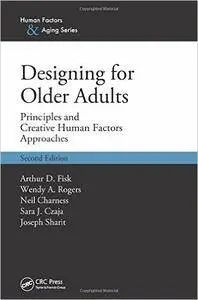Arthur D. Fisk, Wendy A. Rogers, "Designing for Older Adults: Principles and Creative Human Factors Approaches, Second Edition"
2009 | ISBN-10: 1420080555 | 232 pages | PDF | 5 MB
2009 | ISBN-10: 1420080555 | 232 pages | PDF | 5 MB
The first edition of Designing for Older Adults: Principles and Creative Human Factors Approaches broke ground as an easily accessible source of information, a primer on designing for older adults. In this second edition, the authors, as any good human factors practitioner would, have considered comments from readers. They have revised and updated each of the original chapters, rearranged some of them for a more natural flow, added a new section of tutorials, and provided updated recommended readings.
New in the Second Edition:Two new applications chapters: Transportation and Aging-in-Place
New Tutorials section provides hands-on guidance for critical issues
Re-organization of Design Guidelines section allows for better flow of topics
The new Tutorials section begins by focusing on general issues that need to be considered when involving older adults generally in research and usability studies and more specifically in focus group studies. It elucidates statistical considerations relevant to user testing with older adults and modeling approaches such as task analysis, error prediction, and GOMS analysis. Given the prevalence of multimedia in today’s world, the authors include a tutorial on design considerations for multimedia products in general but especially for older adults.
Meet the Needs of Older Adults through Proper Design
Reflecting the multidisciplinary nature of the field, this multidisciplinary author team translates a vast array of academic literature into guidelines without losing its strong grounding in science. They discuss the role the field of human factors plays in creating technology that is effective and safe to use. This book provides information specific enough to be immediately applicable yet general enough to be relevant to technologies of the future.



